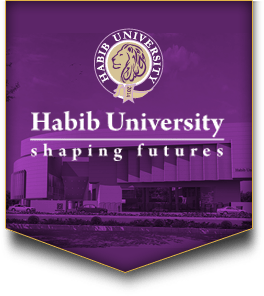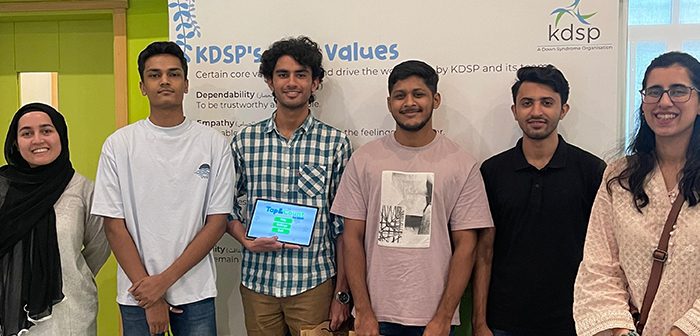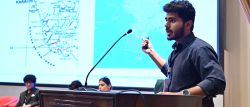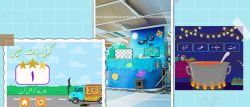Khidmat: Learning Through Service
Khidmat (translated in Urdu as ‘service’ ) is a mandatory non-credit requirement for Computer Science students at Habib University, where they have to volunteer at least 40 hours and use the skills they have learned in their undergraduate program to help and give back to the community around them. Learn about one Khidmat Project team’s experience creating an inclusive numeracy app for children with Down syndrome; merging tech, empathy, and impact. The team consisted of Minhaj Ul Hassan, Muhammad Zarrar Ul Arfeen, Muhammad Faheem Haider, and Salman Kamal.
An Idea Sparked by Empathy
The Khidmat project, a required part of our Computer Science program, is meant to encourage students to use their skills for social good. It turned into something much deeper for us; the spark came during a Khidmat event earlier in the semester, where several NGOs presented their work. One of them had developed a learning game for children with autism. That idea, using technology to make learning playful and meaningful, stayed with us. We wanted to create something with the same heart.
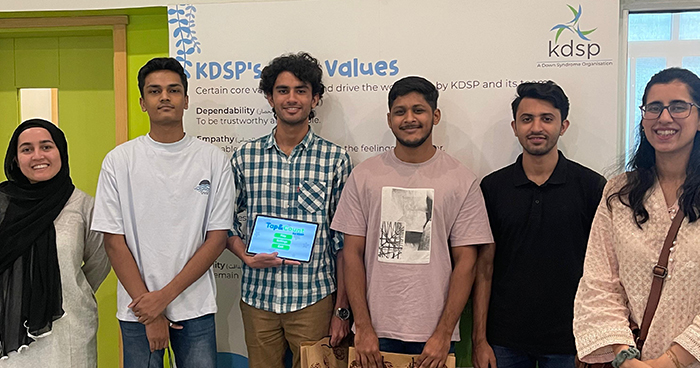
Computer Science students (Class of 2027) Minhaj Ul Hassan, Muhammad Zarrar Ul Arfeen, Muhammad Faheem Haider, and Salman Kamal at KDSP.
Partnering with the Karachi Down Syndrome Program (KDSP)
Through a few discussions and connections, we were introduced to the Karachi Down Syndrome Program (KDSP). [The Karachi Down Syndrome Program (KDSP) is a non-profit organization established for the value, acceptance, and inclusion of individuals with Down syndrome].
From our first meeting, their warmth and passion for inclusive education drew us in. After rounds of brainstorming, we decided to build a numeracy learning app “Tap & Count” designed especially for children with Down syndrome.
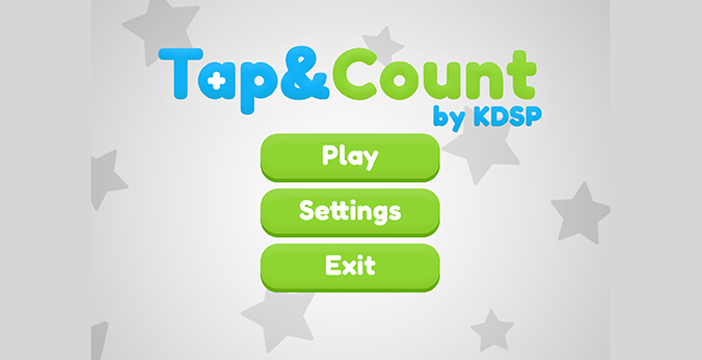
The interface design that uses cheerful visuals for simple, joyful learning.
Designing for Joyful Learning
We started with three modules: Counting, Addition & Subtraction, and Touch Math, a tactile system that helps children visualize numbers through touch points. The goal was simple – make math feel like play. But simplicity, we soon learned, is never easy. Every sound, color, and movement needed thought and care. Each of us found our role along the way.
Teamwork in Action
Zarrar led the design of the interface and visual assets, creating an experience that was cheerful but gentle for young learners. Salman became the backbone of the project, handling the core logic and programming. His steadiness and precision kept everything tied together. Faheem managed the testing and contributed to modules inspired by See & Learn, helping us maintain quality and consistency. I (Minhaj) worked on the app’s initial structure and layout, then led the final testing – checking every tap, sound, and animation until it felt just right.
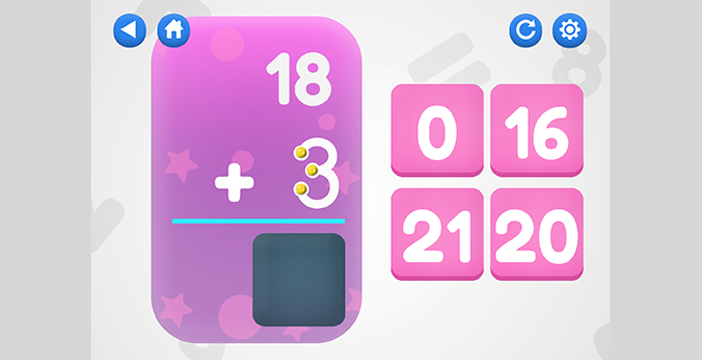
Every sound, color, and movement was crafted with care: each team member found their role in bringing Tap & Count to life.
Going Beyond: Adding ‘See & Learn’
As the project grew, we realized we could do more. With some time still in hand and a desire to create something lasting, we suggested merging KDSP’s existing learning tools into our app. They welcomed the idea, and that’s how our fourth module, See & Learn, came to life.
Of course, the process wasn’t always smooth. There were nights when progress stalled, when a fix in one area broke something else, and when the finish line fell far away. Animations went out of sync, new bugs appeared, and frustration quietly crept in. But we kept going, fueled by teamwork, small wins, and late-night encouragement that reminded us why we started.
Moments That Matter
Then came a small moment that changed everything. During one of our meetings, a teacher mentioned that many students found backward counting difficult. It was a simple comment, but it carried the kind of care only a teacher can have – a quiet wish to make learning easier for her students. That suggestion stayed with us, and we began thinking of small ways to make the activity more engaging – something that would hold the children’s attention and make them smile while they learned. What we eventually added was subtle: a light animation that made the experience more visual and interactive. It wasn’t anything dramatic, but it brought warmth to the screen and, in its own quiet way, made the lessons feel more alive.
When the app was finally tested at KDSP, all the tiredness of the past weeks faded away. We watched quietly as a child tapped the screen, counting along with full focus, a faint smile spreading across their face. For a few moments, the room felt still and alive in a gentle way. It wasn’t pride we felt, but something deeper – the realization that something we built with care was now connecting with someone in the simplest, most human way.
That single smile made every late-night worth it.
Redefining Khidmat: Service
After that visit, our understanding of Khidmat changed. We started out thinking it was about giving – about helping others. But we left realizing how much it had given us instead. It taught us patience through trial and error, teamwork through trust, and empathy through creation.
Because at its heart, this wasn’t a lesson in coding or design. It was a lesson in care. We discovered that even a small animation or a gentle sound could change how a child feels while learning. It taught us that technology, when built with intention, can do more than teach – it can touch lives.
Building With Heart
We began this journey wanting to create something meaningful for others. But somewhere along the way, the process became meaningful for us too. It made us slower, more reflective, and more aware of the people behind the screens we design for.
And maybe that’s what Khidmat truly means – not just service, but transformation. When you build with heart, you don’t just change the world around you, you change yourself.
Explore Habib University’s Computer Science program: where students turn technology into tools for social good.
